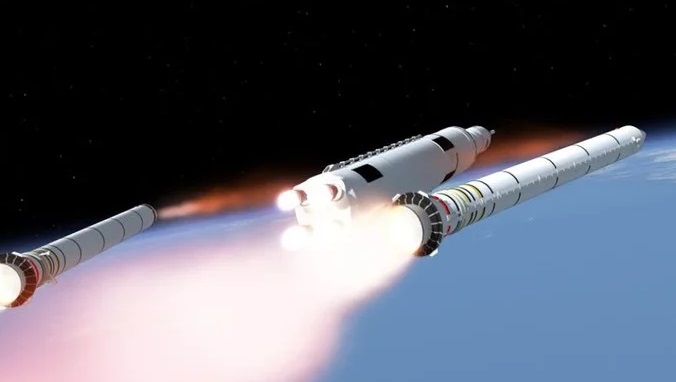Among the various aerospace propulsion technologies, liquid rocket engines were the first to enter aerospace engineering applications. Due to their high performance and reliability, and good mission adaptability, they have always occupied a dominant position, from the first experiments starting in 1926, to the development of ballistic missiles (1944-1970) and carrier rockets (1957-today), which initiated the era of human spaceflight and sustained the vigorous development of related activities.

At present, major propulsion systems, such as the auxiliary propulsion system of launch vehicles (except for small solid launch vehicles), space shuttles, aerospace aircraft, spacecraft, satellites, space stations, deep space probes and other devices, almost all use the liquid fuel rocket.
Based on different application needs, liquid-fuel rocket engines have developed hundreds of engineering products of various types and with different levels of thrust, propellants, and power cycle methods.
The performance and technical level of the engines used for the main propulsion system of the base stage, and the upper stage of the launch vehicle (referred to as the main engine), directly determine the effectiveness of the launch vehicle, and influence a country’s capability and its level of space access, exploration, utilization, and development. Therefore, such systems are considered the cornerstone of aerospace development as well as important strategic guarantee for national security and great power status.
At the same time, the deployment of the main engine is technically complex and difficult, with a long development cycle and high costs; it pertains to the national strategic core industry and is a concentrated expression of the country’s industrial base, scientific and technological level and global national strength . In today’s world, only a few countries, such as the United States of America, RP of China, Russia, France and Japan are able to independently develop the main launch vehicle engine on an industrial scale.
The launch vehicle requirements for the main engine include high thrust, specific impulse, thrust-to-weight ratio, reliability, and low cost. These indicators determine that the engine operates with extreme parameters that exhaust the limiting performance of materials, and realize the operating characteristics of high-level release and energy conversion in a small structural space.
Such parameters of extreme high-value operating conditions and extremely short start-up times (generally less than three seconds) are not matched by all other thermodynamic machines.
Because of the above operating characteristics, combined with the environmental and mission profile, the engines are increasingly complex, and the liquid rocket main engine has unique technical features, including the following:
1) The working process mechanism is complex, and it is difficult to effectively predict and control it.
2) Issues, such as system shock oscillation during engine transition, multi-field coupling of components ( like combustion instability, flow-induced vibration, etc.), sub-synchronous vibration of the flexible rotor, have caused engine failure many times in the history of space aeronautics, and it takes a lot of time and money to solve problems such as high-frequency unstable combustion, and sub-synchronous vibration of other hydrogen-oxygen engines.
However, the mechanism has not yet been fully elucidated and the design simulation method is not yet mature, resulting in heavy dependence on testing and difficulties in troubleshooting and improvement. Especially for high-thrust engines, issues related to scale effects, such as combustion stability, turbopump axial force balance and rotor stability, will become increasingly important if seriously sidereal distances are to be achieved.
The loading environment is complex and harsh, and structural strength and fatigue/stress issues are important, such as extreme operating load, including high speed, pressure, heat flow, temperature, thermal shock during startup, etc.
The high thrust-to-weight ratio of the motor requires a light structure, and the complex and rigid load environment causes major problems such as low margin giving high uncertainty and failure mode-related hazards in motor strength and fatigue/stress life.
In terms of component processing, some special production technologies are difficult (such as stamping or precision machining on an extreme scale, efficient removal of difficult-to-machine materials, special preparation of welding and coating, etc.). In addition, the impact of the process on the performance of structural materials is difficult to test and evaluate.
In terms of general assembly and inspection, it is difficult to accurately connect components, ensure the consistency of the assembly itself, and detect its status (redundant objects, errors, stress, etc.).
In terms of operation and maintenance, there are few engine interfaces and the environment and conditions are limited, making it difficult to detect, process, assess the situation and then quickly repair and maintain.
The main liquid rocket engine originated from the application of strategic missiles, and has been widely developed under the drive of space transportation systems based on launch vehicles.
The armament race between the United States of America and the Soviet Union, which started the space race struggle, and was certainly not the “will of man’s pure knowledge,” developed a series of ballistic missiles, and derivative launch vehicles that gave origin to the moon landing rockets. In this context, the main engine of liquid propellant rockets was developed in the round, with a large number of types and quantities of research and production, low performance and no emphasis on cost.
Propellants were mainly toxic and storable liquids: oxygen kerosene and later liquid oxygen and enriched liquid hydrogen. The production method was mainly based on the gas generator cycle, while an additional high-performance combustion cycle and an expansion cycle were later developed.
Typical conventional propellant engines originated in the United States of America (Titan). Liquid oxygen, liquid hydrogen and expansion cycle kerosene engines include Thor, Delta and Saturn.
Typical conventional propellant engines developed by the Soviet Union we can mention the Cosmos, oxygen-enriched supplementary combustion Proton, and liquid oxygen kerosene Soyuz. France developed the Viking engine . The People’s Republic of China gave birth to the YF-20/24 engine to support the development of the CZ-2/3/4 series of conventional launch vehicles, while from 1972 to 1993, there was the development phase of high-performance engines for civilian space aeronautics.
The carrier rocket developed independently of ballistic missiles. Typical features are the non-toxic liquid oxygen kerosene, liquid oxygen hydrogen; and high performance related to the additional combustion cycle, and expansion, capable of producing high base level thrust.
Examples of civilian spacecraft are the U.S. SSME (Space Shuttle Main Engine); the former Soviet Energia and Zenit; the European Ariane and Vulcain; the Japanese LE-5 and Rich Afterburn; and the Chinese YF-75.
From 1994 to 2009, there was a phase of development of rocket-guided engines with high reliability, low cost, and profiling.
The international launch engine market is booming, but the economics and safety of the Space Shuttle have not met expectations: high reliability, low cost and one-off modular rockets have become the focus of development.
Engine development based on high reliability, low cost and modularization of the propulsion system became a key factor. Engine development and improvement in various countries are carried out around this principle.
Author: Giancarlo Elia Valori – Honorable de l’Académie des Sciences de l’Institut de France, Honorary Professor at the Peking University.
(The views expressed in this article belong only to the author and do not necessarily reflect the views of World Geostrategic Insights).







